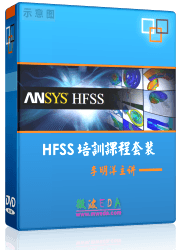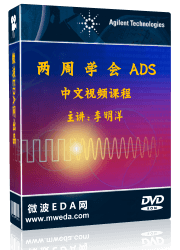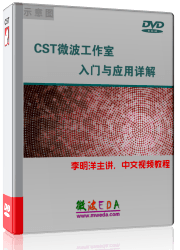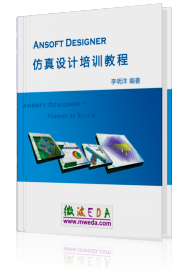Integral Equation Solver Parameters
 Solver
Solver  Start Simulation Start Simulation  Integral Equation Solver Integral Equation Solver
Read the Solver
Overview or the Integral
Equation Solver Overview to understand the basic concepts of the integral
equation solver. In this dialog, many important settings for the solver
run can be set. Most of them have a strong influence on the calculation
time. Also, optimization runs and parameter sweeps can be set up from
here.
Solver settings frame
Accuracy:
Defines the desired linear equation system solver accuracy in terms of
the relative residual norm. This is the termination criterion for each
solver run at a single frequency sample.
Store result
data in cache: Select this option if you want the solver results
to be stored in the result
data cache. The efficient usage of the result data cache is explained
in the printed documentation "Advanced
Topics".
Excitation settings frame
Source type:
In this drop-down list you can select the sources for the integral equation
solver calculation, ports for S-parameter calculations, a Plane
Wave or a List of excitations.
The selected sources will be stimulated. In case of S-parameter ports,
this defines which row of the S-parameter matrix will be calculated. Select
All Ports to calculate the full
S-parameter matrix for ports. Choosing the List
entry presents a new button offering the possibility to Select...
a special combination of port modes or excitations. If current
sources or farfield sources
are defined they have to be selected in the List.
S-parameter settings frame
Norm to fixed
impedance: S-parameters are always normed to a reference impedance.
You may either select to norm them to the calculated impedance of the
stimulation port or you may specify a number of your choice. Renormalization
to a fixed impedance is only possible if all S-parameters are calculated,
i.e., whenever all ports and modes are excited.
Frequency samples frame
List of samples:
The list of frequency samples allows you to easily define the number,
interval, and sampling method of integral equation solver simulation points
by entering values in the corresponding columns. Samples may be single
frequencies, equidistantly distributed or automatically
chosen within the given range. When the number of Samples
is not defined (left blank), the solver stops calculating additional samples
as soon as the S-parameter
sweep convergence criterion is satisfied.
If the upper or lower limit of the frequency
range (columns From and To) is omitted (left blank), the global
frequency range will be used instead. Please note that the global maximum
frequency range is displayed in the first line. To change these values,
you may go into the Frequency
Range Setting dialog box in the main menu under Solve
 Frequency.... Frequency....
Invalid settings will be marked by a red background
color. Right-click in the highlighted cell and select Help
from the context menu to get a hint. Sample definitions (rows of the list)
can be deleted using the context menu, or simply by pressing the delete
key.
If a broadband
frequency sweep is performed with the stopping criterion enabled
(default, see Solver
Sampling), the number of frequency samples defines the maximum number
of integral equation solver runs for a single S-parameter calculation.
Naturally, the simulation time increases with
the number of frequency samples. This relationship may be approximately
linear.
Use broadband
frequency sweep: Calculate broadband S-parameter curves by using
as few frequency samples as required for reaching the stop criterion defined
in the Solver
Sampling dialog. In this frequency sweep mode, the number of frequency
samples is an upper limit. At least three samples are required.
Press the Properties...
button to configure the convergence criterion of the broadband S-parameter
sweep.
Start solver
Starts the integral equation solver calculation.
Optimize...
This button opens a dialog box that allows you
to set up and start an optimization
run.
Par. sweep...
Opens the parameter
sweep dialog.
Acceleration...
Opens the acceleration
dialog box to control the high performance options of the simulation
run (e.g. GPU acceleration, Distributed Computing, MPI).
Specials...
This button leads to a dialog
where further special settings for the solver can be made. The settings
are for expert users only and should generally not be changed.
Apply
Store the specified settings without starting
the calculation.
Close
Closes this dialog box without performing any
further action.
Help
Shows this help text.
See also
Special
Integral Equation Solver Parameters, Solver
Sampling, Frequency
Range Setting, Select
Excitation, Distributed
Computing Overview




HFSS视频教程
ADS视频教程
CST视频教程
Ansoft Designer 中文教程
|